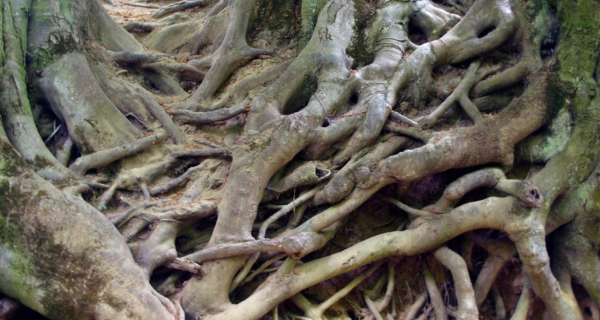A abhall, abhlachóg,
Tren rotchraithenn cách
O apple tree, little apple tree,
Much art thou shaken
~ “An Laoi Shuibhne,” 12th century rhyme
Botanical name: Malus sylvestris
Family: Pyrus, malus
Ogham: Ceirt
Scots Gaelic: Crann Ubhall, ubhal-fiadhaich, Cuirt
Irish Gaelic: Crann Úll, Aball
Welsh: Afallen; pren afalau, Afal
Message: Persevere through the hard times.
Here in Colorado, the apple is one of the first trees to bloom. And it often suffers for its enthusiasm, broken again and again by the last and heaviest of the winter snows just as it shows its beauty. I’ve seen wild apple trees lose more than three quarters of their branches, cracked and broken under the weight of the crushing snow.
But then something amazing happens. The tree sends up whippy shoots from the broken places. It looks ridiculous, a tree with cracked branches and whippy suckers all over it. But if you cut away the old, dead branches and let a few of the suckers grow, you’ll soon see sturdy new branches working to replace what was lost. If the tree must be cut down altogether, just wait. Soon you’ll see a handful of suckers rise from the stump. Choose the strongest of them, thin the rest out, and in a few years a new tree stands where the old did, blossoms on its branches.
The Ogham linked to the apple tree isn’t actually ‘apple’, aball, but ceirt, ‘rag’. (1) Erynn Laurie and Ellen Hopman both link this name in their books to the old tradition of tying ‘clootie rags’ (clootie being a bastardization of ‘ceirt’) to apple trees with prayers or charms for the easing of trouble. As the rag rots, so goes the trouble.
It was popular to tie clooties on Beltane morning, and in fact the apple is intertwined with Beltane and Samhain: the two halves of the year, winter and spring. Times of change, times of uncertainty over the crop and the harvest. The apple blossoms in the spring and the ripe red apple of the fall link us with the same anxious hope: Let us get through this.
The apple is the tree that tells you, “Yes, times are going to be hard. And you’re going to survive them.” It will offer you the sustenance you need to get through hard times, as it has always offered mankind its bounty; the wonderful reds and russets of apple harvest are inextricably entwined with the winter closing in. “Here,” the apple tree says, offering its lasting fruits, “take what I offer you, hard times are coming. Make sure you have sustenance for what’s ahead.” For the people of northern Europe, the apple was one of the staple winter foods. Packed with antioxidants, fiber, flavonoids and sugars, storing and lasting far longer than most ripe fruits, apples can help sustain animals and people when all other food has been exhausted. (2) Apples, like the tree they come from, are lasting.
Maybe this is why the apple tree is treated with such respect in the legends of Ireland. The people of ancient Ireland understood the value of this tree; in the Brehon laws, the Apple is listed as one of the Airig Fedo, Nobles of the Wood, and the punishment for harming one was quite a lot of wealth for the time period. In stories, the apple is a symbol of that which doesn’t fade. In the tale of Echtrae Chonnlai (3) the apple has the power to regenerate itself and nourish him for a whole month:
Boí Connle íar sin co cenn mís cen dig cen biad, nabu fiu leis nach tóare do thomailt acht a ubull. Na nní do:meled, nícon:dígbad ní dend ubull acht ba hóg-som beos.
Thereafter, Connlae was without drink, without food until the end of a month, to him no sustenance was worth consuming save his apple.
And the isle to which King Arthur is brought wasn’t originally called ‘Avalon’, it was Avallach, ‘the land where there are apple trees’. (4) The apple trees took the king in their arms and, so the story goes, one day he’ll come back all the stronger for it.
This is what the apple tells us: Hard times will come, and they will test us. We must be prepared for the trial. We may bend under the strain. We may even break. But we will not die. After we’ve survived the storm, we’ll grow again.
- Ogam: Weaving Word Wisdom, Laurie, Erynn Rowan, Megalithica Books, 2007
- Kindling the Celtic Spirit, Freeman, Mara, Harper Collins Publishers, 2000
- “Echtrae Chonnlai and the Beginnings of Vernacular Narrative Writing in Ireland: a Critical Edition with Introduction, Notes, Bibliography and Vocabulary”, McCone, K., Maynooth: Department of Old and Middle Irish, 2000
- “Apple” Tree Lore, the Order of Bards, Ovates and Druids, http://www.druidry.org/library/trees/tree-lore-apple

